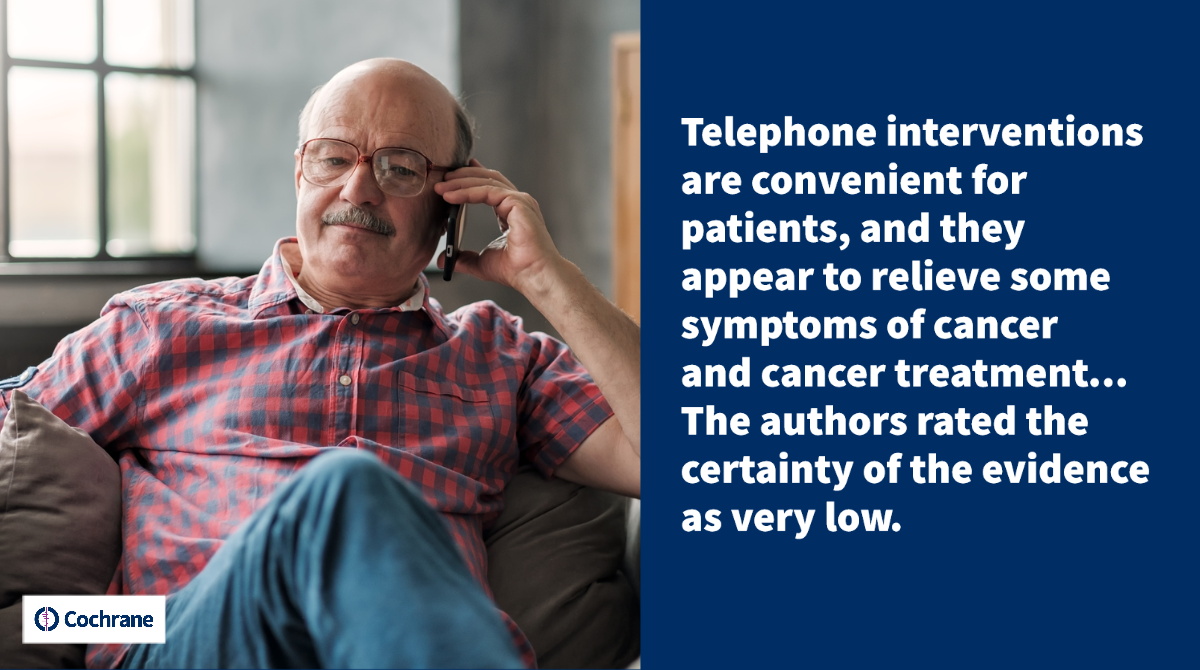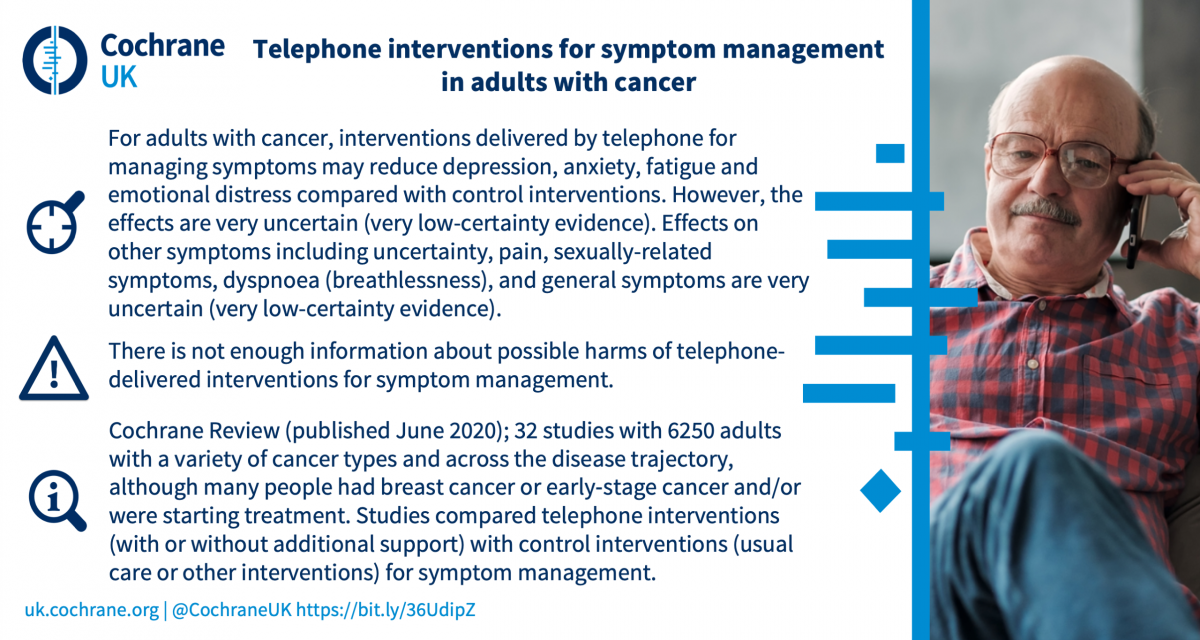
Telephone interventions for managing symptoms in adults with cancer. This is particularly important at the moment for people with cancer, who have been advised to stay at home due to COVID-19.
People with cancer experience a variety of symptoms such as depression, anxiety, fatigue and pain caused by their disease and its treatment. These are often managed, day-to-day, by patients or their family members. Poor management of symptoms may lead to other problems, such as difficulties in carrying out everyday tasks, poor sleep, and poor quality of life.
Cancer specialists have developed psychological and educational interventions to provide support for the management of a range of cancer symptoms. These interventions can often be delivered by telephone in the patients’ homes instead of face-to-face in hospital. This is beneficial for patients and their families, who would normally have to travel to hospital for outpatient appointments. This is particularly important at the moment for people with cancer, who have been advised to stay at home due to COVID-19.
Cochrane Review authors aimed to answer the following questions.
- Are telephone interventions for adults with cancer effective in relieving symptoms of cancer and cancer treatment?
- Which symptoms are most reduced when telephone interventions are used?
- What aspects of telephone interventions have the most impact in reducing cancer symptoms?
In this systematic review, telephone interventions were interventions given only, or mainly, by telephone. They were given by health professionals. As well as telephone contact, they could include face-to-face contact, or printed, digital or online information.
The review included 32 studies with a total of 6250 participants. Studies could compare telephone interventions with another telephone intervention, with another type of intervention (e.g. face-to-face), or with usual care. Participants in these studies were adults with any kind of cancer at any stage. Most studies (21) were from the USA. Nine studies recruited women with breast cancer, 11 included people with breast, colorectal, lung, or prostate cancer. Fourteen studies included people with early-stage cancer. Nurses provided interventions in 24 studies. Only 10 studies delivered interventions solely by telephone, and 16 studies combined telephone calls with other materials (printed or digital). Studies measured symptoms of depression, anxiety, emotional distress, uncertainty, fatigue, pain, sexual symptoms, and breathlessness. They also measured the effect of all the symptoms together (the general symptom experience).

Most studies compared a telephone intervention with usual care alone or usual care with additional support. Eight studies compared two telephone interventions against each other; some also compared these with usual care.
The review authors analysed the results from studies that recorded change scores, or for which they were able to calculate change scores.
Twenty-one studies provided evidence on symptoms of depression compared to usual care or other interventions, but only nine provided data that could give change scores. These found that telephone interventions appeared to reduce symptoms of depression. Likewise, telephone interventions appeared effective compared to usual care or other interventions in reducing anxiety (16 studies; 5 contributed change scores); fatigue (9 studies; 6 contributed change scores); and emotional distress (7 studies; 5 contributed change scores).
Telephone interventions are convenient for patients, their families and healthcare workers and they appear to relieve some symptoms of cancer and cancer treatment. However, the studies were small, very different from each other, and some evidence was conflicting. It is unclear whether telephone interventions alone, or combined with face-to-face meetings, or printed or audio materials, are most effective in reducing the many symptoms that people with cancer experience. The authors rated the certainty of the evidence as very low.
This review includes evidence published up to January 2019.

